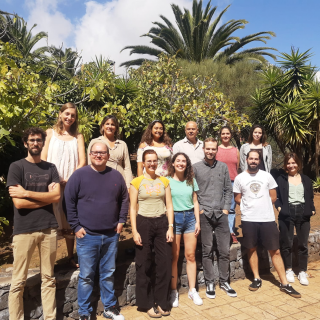Bibcode
Forbes, Duncan A.; Gannon, Jonah; Iodice, Enrichetta; Hilker, Michael; Doll, Goran; Buttitta, Chiara; Marca, Antonio La; Arnaboldi, Magda; Cantiello, Michele; D'Ago, G.; Falcon Barroso, Jesus; Greggio, Laura; Gullieuszik, Marco; Hartke, Johanna; Mieske, Steffen; Mirabile, Marco; Rampazzo, Roberto; Rejkuba, Marina; Spavone, Marilena; Spiniello, Chiara; Capasso, Giulio
Bibliographical reference
Monthly Notices of the Royal Astronomical Society
Advertised on:
10
2023
Citations
18
Refereed citations
14
Description
Although ultra diffuse galaxies (UDGs) are found in large numbers in clusters of galaxies, the role of the cluster environment in shaping their low surface brightness and large sizes is still uncertain. Here, we examine a sample of UDGs in the Hydra I cluster (D = 51 Mpc) with new radial velocities obtained as part of the LEWIS (Looking into the faintest with MUSE) project using VLT/MUSE data. Using a phase-space, or infall diagnostic, diagram we compare the UDGs to other known galaxies in the Hydra I cluster and to UDGs in other clusters. The UDGs, along with the bulk of regular Hydra I galaxies, have low relative velocities and are located near the cluster core, and thus consistent with very early infall into the cluster. Combining with literature data, we do not find the expected trend of GC-rich UDGs associated with earlier infall times. This result suggests that quenching mechanisms other than cluster infall should be further considered, e.g. quenching by strong feedback or in cosmic sheets and filaments. Tidal stripping of GCs in the cluster environment also warrants further modelling.
Related projects

Traces of Galaxy Formation: Stellar populations, Dynamics and Morphology
We are a large, diverse, and very active research group aiming to provide a comprehensive picture for the formation of galaxies in the Universe. Rooted in detailed stellar population analysis, we are constantly exploring and developing new tools and ideas to understand how galaxies came to be what we now observe.
Anna
Ferré Mateu